1199 Oral Histories
1999 Oral Histories
Investigator: Barb Morley, Kheel Center for Labor-Management Documentation and Archives
Preservation Fund, 2017
The Kheel Center is the official archival repository of the National Union of Hospital and Health Care employees (known as Local 1199 and District 1199). In Local 1199’s early days, the union was a major force in the history of organized labor in New York City, and since its evolution to representing heath care workers, the union has been a major political player nationally—in labor rights, as well as civil rights. With a large membership of African-American, Caribbean, and Latino workers, a robust arts and education program, and a broad and progressive political agenda, the union has been the subject of much study in recent years. This project aims to digitize and preserve interviews conducted between 1975 and 1980 with union leaders, delegates, and members, totaling an estimated 210 hours.
19th Century Prison Reform
19th Century Prison Reform
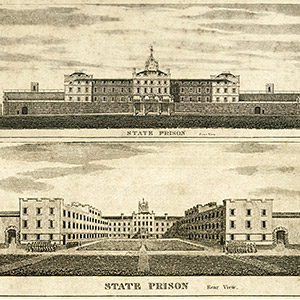
Investigator: Katherine Thorsteinson, PhD candidate, English
Arts & Sciences, 2017
19th Century Prison Reform Digital Collection
In the early to mid-19th century, U.S. criminal justice was undergoing massive reform. The state prisons that had emerged out of earlier reform efforts were becoming increasingly crowded, diseased, and dangerous. This collection draws together invaluable documents surrounding the emergence and development of the Auburn and Pennsylvania Systems. These documents help chart the debate between these alternate prison reformation systems, the emergence of prison labor, the theological origins of the American prison, and the historical implications between slavery and mass incarceration. The collection supports research and teaching for a wide variety of disciplines, and is especially significant given the intensity with which the public is now concerned with the current state of incarceration.
Africana Studies and Research Center Lectures
Africana Studies Research Center Lectures
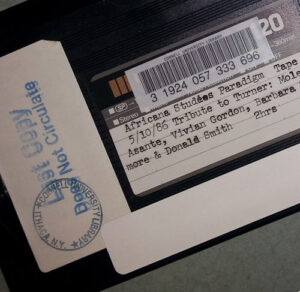
Investigator: Kofi Acree, Africana Library
Preservation Fund, 2014-2016
Index of Africana Studies and Research Center lectures
The project will digitize a significant portion of lectures recorded at the Africana Studies and Research Center, dating from the early 1980’s and currently in VHS format. This collection is paramount to the history and teaching mission of the Center, and provides researchers with insight into the development and the interdisciplinary nature of Africana Studies. The tapes cover Black Studies from a diaspora perspective, addressing issues in Africa, America and the African-Caribbean.
Afrika Bambaataa Archive
Afrika Bambaataa Archive
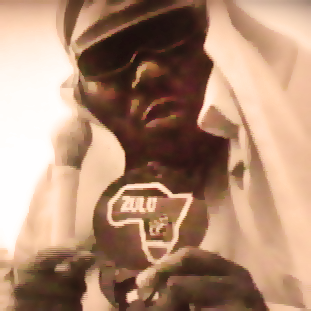
Investigator: Katherine Reagan, Rare and Manuscript Collections
Preservation Fund, 2015
Often called the “Godfather” of Hip Hop, Bambaataa has defined and exemplified Hip Hop since it emerged in the South Bronx, New York City, in the 1970s. One of a handful of Hip Hop’s originators, Bambaataa gave Hip Hop its name, and was the first to define its core artistic elements—DJing, rapping, breakdancing, and graffiti art—under one cultural umbrella. In 2007 he was nominated for induction into the Rock and Roll Hall of Fame. The at-risk audio and video materials in his archive document his performances, speaking engagements and appearances, meetings and anniversary events associated with the Universal Zulu nation, and political marches and speeches in New York City and Washington DC. Selection includes 30 acetate recordings, 50 video tapes and 100 audiotapes.
Ahearn Oral Histories
Ahearn Oral Histories
Investigator: Katherine Reagan, Rare and Manuscript Collections
Preservation Fund, 2017
This project will digitize at risk audio recordings in the Cornell Hip Hop Collection, specifically 38 oral history cassette tapes from the Charlie Ahearn Hip Hop Archive and 52 cassette tapes from the Kevin Powell Archive. The digitization and preservation of these fragile items will also allow for greater access to these unique oral history interviews with hip-hop MCs, DJs, and other artists and entertainers.
Alexander Kluge: Cultural History in Dialogue
Alexander Kluge: Cultural History in Dialogue
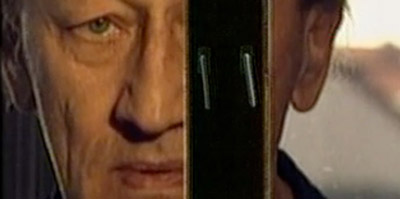
Investigator: David Bathrick, German Studies/Theater
Collaborator: Dr. Rainer Stollmann, University of Bremen (Germany); University of Bremen Library; Dr. Michael Jennings, Princeton University
Arts & Sciences, 2011
Alexander Kluge: Cultural History in Dialogue Website
We will significantly expand the existing Muller-Kluge online collection, which is one of the most visited collections hosted by the Library. The website consist of interviews between West German filmmaker Alexander Kluge and the East German playwright Heiner Muller. The new site will will incorporate Kluge interviews with Hans Magnus Enzenberger and Oskar Negt. This initiative also involves a partnership and will enable Cornell to have access to Princeton’s Kluge Research Collection.
American Bee Keepers Photographs
American Bee Keepers Photographs
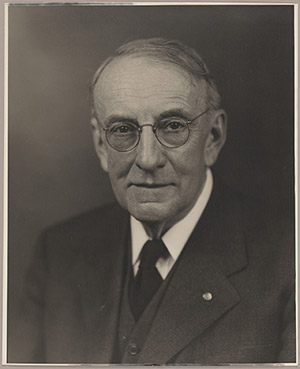
Investigator: Michael Cook, Mann Library
Preservation Fund, 2019
This collection contains photographs of nationally and locally notable figures in the history of American beekeeping from the 19th and 20th centuries, including Lorenzo Langstroth, Amos Root, Everett Franklin Phillips, Elton Dyce, Roger Morse and others. It also contains several group photographs from various beekeeper conventions ca. 1880’s-1930’s and from the earliest short courses on beekeeping held at Cornell.
Anthropology Collections
Anthropology Collections
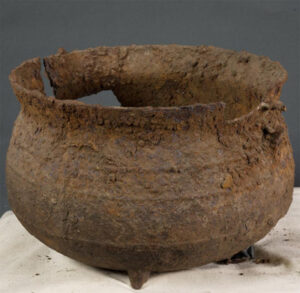
Investigator: Fred Gleach, Anthropology
Collaborator: Eilis Monahan, Graduate Student, Near Eastern Studies
Arts & Sciences, 2012
The Anthropology Collections (Department of Anthropology) include objects covering much of the range of human history and activities. The objects are used both for teaching and research purposes but are not regularly accessible due to facility and staffing limitations. The project will focus on a set of sub-collections for digitization to improve accessibility for students and faculty, increase awareness and use of the overall collections, and lay the framework for future education and research developments.
Archive of Field Recordings
Archive of Field Recordings
Investigator: Bonna Boettcher, Music Library
Preservation Fund, 2013
The Archive of Field Recordings comprises around 193 hours of audio recordings made in Indonesia, on some 210 reels of quarter-inch tape. The majority of the recordings are of gamelan music from Central Java; a smaller number, accounting for about 30 hours, are from Lombok. The recordings from Central Java were made by some of the first researchers to reach a high level of competence in learning to play gamelan, realizing the ideal of “bi-musicality” advocated by Mantle Hood. Most of the recordings were made between 1975 and 1977; a smaller number were made by Marty Hatch in 1970 and 1971. The choice of what and whom to record was thus very well informed, and the researchers had established relationships with the leading musicians of the time. The smaller portion of the archive is significant in a different way, documenting the music and rituals of the Sasak people of the island of Lombok, who have received comparatively little scholarly attention. The recordings were made by Judith Ecklund in the 1970s in conjunction with the research for her dissertation in anthropology, which she completed at Cornell in 1977. Both collections are owned by the Sidney Cox Library of Music and Dance.
ART 2301 Printmaking Student Portfolios
ART 2301 Printmaking Student Portfolios
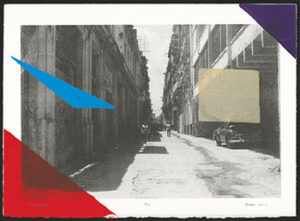
Investigator: Gregory Page
Art, Architecture, and Planning, 2017
The collection is comprised of scanned fine art print portfolios from Associate Professor of Art Gregory Page’s ART 2301: Introduction to Print Media classes. Themes and collaborators of the portfolios include historical artists, museum exhibitions, and projects at the Cornell Botanic Gardens, to name only a few. Collaborators for these projects include the Johnson Museum of Art, Cornell Botanic Gardens and the departments of Entomology and Biology all at Cornell University.
The project from the fall 2017 semester is entitled Impressions from Rembrandt. The work is a response to the concurrent exhibition Lines of Inquiry: Learning from Rembrandt Etchings at the Herbert F. Johnson Museum of Art at Cornell University in Ithaca, New York. Collaborators included Andrew C. Weislogel, Curator, Earlier European and American Art, and Cathy Klimaszewski, Associate Director and Curator of Education, both at the museum.
Ast’s Lexicon Platonicum
Ast’s Lexicon Platonicum
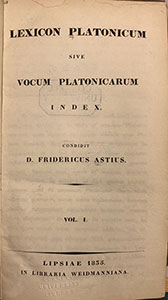
Investigator: Jeffrey Rusten, Classics
Arts & Sciences, 2019
Friedrich Ast’s 1833-8 lexicon to Plato in 3 volumes (1833-8, 2000 pages, almost 10,000 individual word-articles and more than 60,000 quotations in Greek) was unusual in treating every word in Plato (even the most common particles and conjunctions which are usually omitted), and offering full definitions (in Latin) based on his own Latin translation and commentary; it is still in print today.
This Lexicon’s digitization will enable it to be corrected by comparison to a modern digital Plato text, linked by hypertext to the complete set of Platonic Greek words, and augmented (from recent databases of ancient Greek) with classifications by word families, semantic categories, frequency lists by dialogue, modern bibliography and even illustrations. Its website will also be the basis for further scholarly work, and serve as the platform (after the model of recently appeared pilot project of a Thucydidean lexicon) for a long-term project to replace Ast’s articles gradually with modern ones in English, based on updated lexicographic guidelines.
Bandung Artist Collection
Bandung Artist Collection
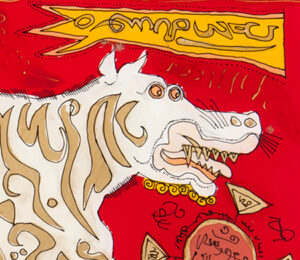
Investigator: Anissa Rahadiningtyas, PhD Candidate, Art History
Arts & Sciences, 2019
Bandung Artist Collection Website
This project will digitize and present the works of two prominent artists in the development of modern art in Indonesia: Ahmad Sadali (1924-1987) and Haryadi Suadi (1939-2016). Their works represent the focus of Rahadiningtyas’ research on Islam and modern art in Indonesia as they show different reinterpretations of modernity and Islamic religiosity; her research re-evaluates the narrative of Indonesian modern art by locating the importance of Sadali and Suadi within the context of Indonesian modern Islamic art. This project aims to add to, and complement, existing collection strengths found at Cornell in the area of Indonesian modern art, in order to make its various trajectories accessible to researchers and a global audience. Art historians, historians, and students in area studies, as well as in Islamic studies, can make use of this collection to research, teach, and learn about Indonesian modern art and visual cultures; the circulation of Islamic images and objects in the global world; the history of the particular development of Islam in Indonesia; the influence and characteristics of Islam in Indonesia; and about Indonesia and Southeast Asia in general.
Berrigan Oral History Reels
Berrigan Oral History Reels
Investigator: Evan Earle, Rare and Manuscript Collections
Preservation Fund, 2017
Daniel Berrigan (1921-2016) was a Jesuit priest and anti-war activist who served as a director of United Religious Work at Cornell, and rose to national prominence as a member of the Cantonsville Nine. These tapes detail university planning in the days leading up to the “America is Hard to Find” weekend, an event celebrating nonviolent resistance, during which Berrigan, at that point a fugitive, made a highly anticipated appearance. Additional tapes document interviews conducted in 1976-77 with Berrigan’s colleagues, friends, and fellow peace activists. They are a unique resource for scholars, as well as activists.
Bill Adler Hip Hop Archives
Bill Adler Hip Hop Archives

Investigator: Bill Adler, Katherine Reagan, Ben Ortiz
Digitize and make available portions of the Bill Adler Hip Hop Archives, consisting of over 500 vinyl records, an impressive collection of books in several languages and roughly 100,000 newspaper and magazine articles about rap and hip-hop.
Black Sexualities Collection
Black Sexualities Collection
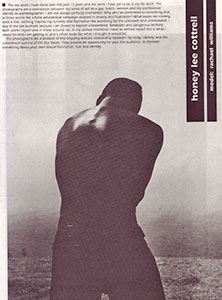
Investigator: Amaris Brown, PhD Candidate, Africana Studies
Collaborator: Cheryl Finley, History of Art; Brenda Marston, Cornell University Library
Arts & Sciences, 2019
A bare blackened back is the subject of the gaze. Folding their broad shoulders inwards, the model turns away from the camera’s lens. Head downward and limbs pressed towards each other, three vertebrae catch the light revealing the dark silhouette’s otherwise muscular anatomy. Racial histories of sexuality, physical labor, and unstable gender identity narrate the contours of a blackened back postured tensely against a grainy distant field. In one sense the photograph portrays what C. Riley Snorton has challenged as “the dominant logic of identity” where ““race” and “gender” are fixed and knowable”[1]. This photograph of Rachael Williams taken by the late Honey Lee Cottrell, provides a preview for researchers into the Black Sexualities Collection[2]. The collection takes cue from the historical erasure of black masculine, femme, and trans/gender embodiment and explores the potential of these narratives to disrupt paradigms of legible gender and sexuality. By exploring the contours of blackened subject matter at the limits of racial/sexual/gender representation, the Black Sexualities Digital Collection is devoted to addressing the epistemological, ontological, and social construction of black gendered life and sexual expression.
The collection draws together photographs, video, surveys, brochures, and travel pamphlets held by the Division of Rare and Manuscript Collections. Historical materials are of particular interest to scholars researching visual arts of the black diaspora, histories of black sexuality/black sexual cultures, genealogies of queer publishing, literary erotic print culture, black performance studies, queer nightlife, and the study of racialized genders transnationally.
[1] Snorton, C. Riley. Introduction to Black on Both Sides: A Racial History of Trans Identity. Minneapolis; London: University of Minnesota Press, 2017 p. 2
[2] Image from the Honey Lee Cottrell Papers, #7822. Division of Rare and Manuscript Collections, Cornell University Library.
Bombay Poets Archive
Bombay Poets Archive
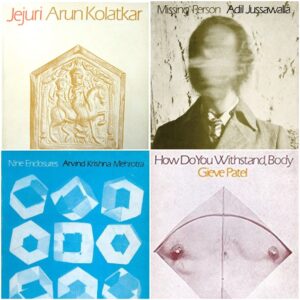
Investigator: Ben Fried, PhD Candidate, English
Collaborator: Bronwen Bledsoe, Cornell University Library; Anjali Nerlekar, Rutgers University
Arts & Sciences, 2021
This project to digitize the Bombay Poets Archive will make the most important existing collection for the study of later twentieth-century Anglophone Indian poetry freely available to scholars worldwide. Housed at Cornell, centered on the Clearing House poetry co-operative, and illuminating the broader Bombay literary scene of the 1970s, the Bombay Poets Archive combines the personal papers of several prominent Indian writers: Arvind Krishna Mehrotra, Adil Jussawalla, Arun Kolatkar, Gieve Patel, and Dilip Chitre, among others. The digital complement to the physical archive will reconstruct the Clearing House operation, curating drafts, letters, and business records to clarify the creative relationships underlying this independent publishing venture and to illustrate how the books it produced were composed, revised, printed, and marketed. Digitization will make the material accessible to researchers prevented by distance, expense, and the pandemic from travelling to Ithaca—while developing a teaching resource for all Cornell faculty members interested in exploring this golden period of Indian poetry.
Campaign Funding and Political Speech
Campaign Funding and Political Speech
Investigator: Peter Enns, Government
Arts & Sciences, 2012
Digitization and OCR (conversion of images into machine-readable text) of a sample of newspapers will allow the textual analysis of how changes in campaign sources influence candidates’ political speech. Supporting research and teaching, this project will encourage collaboration with computer scientists at Cornell who are developing content analysis tools. The pilot will also support a grant proposal to the NSF in order to broaden this research to additional political districts.
Campus Artifacts and Art
Campus Artifacts and Art
Investigator: Howard Howland, CAPE (Cornell Association of Professors Emereti)
Arts & Sciences, 2010
Campus Artifacts, Art & Memorabilia Collection
An update Contributions to Cornell history: Portraits and Memorabilia by Elizabeth Baker Wells (Olin Ref LD 1371.WD 45). This book of 265 pages was published in 1984 with a supplement published about 10 years later. It lists about 2000 plaques, pictures, sculptures, and other objects of artistic and historical interest scattered around the Cornell campus. It is an invaluable record of the University’s historical and artistic artifacts.
Collective Bargaining Agreement, Catherwood Library, Kheel Center
Collective Bargaining Agreement, Catherwood Library, Kheel Center
Investigator: Cheryl Beredo
Collaborator: Barbara Morley
In collaboration with Catherwood Library, DCAPS will digitize upwards of 2000 Collective Bargaining Agreements from the archive, representing contracts from the American educational services and retail industries. The series selected range in length from two pages to two hundred, and span from the 1930s to the 1980s. Funded by the National Historical Publications and Records Commission.
Cornell Bulletin and Freshmen Desk Books
Cornell Bulletin and Freshmen Desk Books
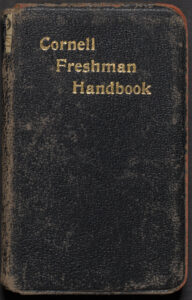
Investigator: Evan Earle and Eileen Keating, Rare and Manuscript Collections
Preservation Fund, 2018
Student’s handbook (HathiTrust)
The Cornell Bulletin of the 19-teens was a newsletter published by female Cornell students that included information relevant to women undergraduates. Content often included announcements about student government, athletics, and other activities and events, as well as general student life.
The Freshman Desk book, also known as the Students’ Handbook, served as a quick reference of commonly needed information for an incoming student at Cornell. This included the academic calendar, information on campus, such as the library and athletic facilities, student organizations and student publications, and the administration. Also some information on campus traditions such as songs. Handbooks also contained information about the Ithaca area and advertisements for local businesses.
Cornell Cast Collection
Cornell Cast Collection
Investigator: Annetta Alexandridis, Classics/Art History
Arts & Sciences, 2010
Cornell’s plaster cast collection that once consisted of ca. 600 casts of statues and inscriptions (made in the 19th century mainly from Greek and Roman, but also from Egyptian, Near Eastern, European Medieval and Renaissance objects), and several hundred casts of medallions and gem stones.
Cornell Coin Collection
Cornell Coin Collection
Investigator: Annetta Alexandridis, Classics/Art History
Arts & Sciences, 2011
Cornell’s coin collection is listed among the most important numismatic collections in the United States. Online availability of 1,500 coins from the ancient world with detailed descriptions will enable the integration of these coins in teaching and learning at Cornell and elsewhere. Because the coins are too valuable and risky, currently they can be used only for small-group classes. The potential is enormous.
Cornell Costume and Textile Collection
Cornell Costume and Textile Collection
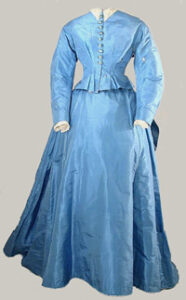
Investigator: Judith Byfield, Department of History; Denise Nicole Green, Fiber Science & Apparel Design; Jolene Rickard, Department of the History of Art and Visual Studies & Director, American Indian Program
Arts & Sciences, 2015
Cornell Fashion + Textile Collection
The Cornell Costume and Textile Collection (CCTC) includes over 10,000 items of apparel, flat textiles, and accessories dating from the late 18th century. The goal is to make the CCTC discoverable and broadly accessible by faculty, students, and researchers and encourage the use of this extensive collection in teaching and research. Currently, the collection attracts visiting scholars and is considered a hidden Cornell gem. Textiles are studied from many different disciplinary perspectives: materials science, chemistry, social sciences, cultural studies, art and design, to name a few. We expect the richness and depth of collections and its broad online availability will provide ample opportunities for collaborations among social scientists, humanities scholars, and physical scientists.
Cornell Engineering Publications
Cornell Engineering Publications
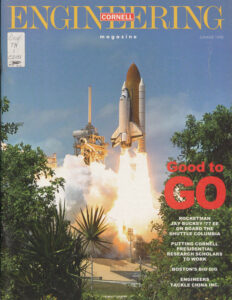
Investigator: Jill Powell, Engineering Library
Preservation Fund, 2017
This project aims to digitize and increase access to a number of Cornell University College of Engineering publications, including The Cornell Engineer (1935-1994). Most of the titles are unique to Cornell and not accessible elsewhere, so the benefit to scholars, alumni, and the public would be immense.
Cornell English Department Recordings
Cornell English Department Recordings
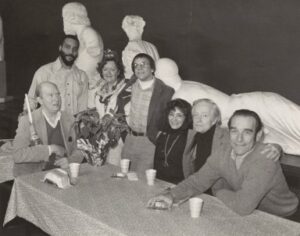
Investigator: Fred Muratori, Research and Learning Services
Preservation Fund, 2015
104 readings and lectures, sponsored or co-sponsored by the Cornell University English Department. These recordings span the years 1976 through 1995, capturing a rich segment of the University’s literary life and history through the voices of prominent poets, fiction writers, critics, and scholars who visited Cornell during that time, as well as those of Cornell faculty and Creative Writing Program graduate students. This selection was curated by Roger Gilbert, Chair of the English Department.
Cornell Gem and Amulet Collection
Cornell Gem and Amulet Collection
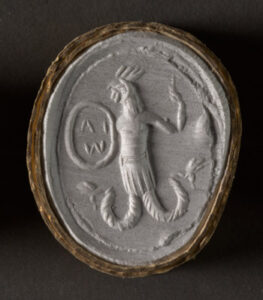
Investigator: Caitlín Barrett and Verity Platt, Classics/Art History
Arts & Sciences, 2013
The project will involve creating a digital repository of the A.D. White Collection of over 2000 plaster casts and impressions of engraved gems and amulets from Classical antiquity. These casts have been used for teaching more than a dozen lecture courses and seminars. Digitization of Cornell’s gem collection would be a natural continuation of projects spearheaded by Professor Alexandridis and Danielle Mericle, who have been digitizing and cataloging the university’s casts of ancient sculptures and its collection of Greco- Roman coins (funded by Arts & Sciences Grants). Digitization of the collection will make it much easier to assign research projects on the material to students, creating a fantastic classroom resource to use alongside the objects themselves.
Cornell Lecture Tapes Collection
Cornell Lecture Tapes Collection
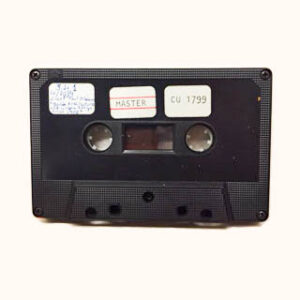
Investigator: Boris Michev, Map & Media Library
Preservation Fund, 2014-2017
Browse the Cornell Lecture Tapes Collection
This project aims to digitize a subset of the Cornell Lecture Tapes Collection. Taken individually or as a group, the recorded presentations exist as historical documents, important to the study of political and cultural life in the late‐twentieth century. The Cornell Lecture Tapes Collection documents the ideas and policies of remarkable thinkers. It is a large archive of public lectures and symposia in which speakers articulate their ideas, clarify theories, debate issues, and respond to questions. Umberto Eco, Henry Louis Gates, Nikki Giovanni, Jürgen Habermas, Alex Haley, Timothy Leary, Edward Said, Isaac Bashevis Singer, W. D. Snodgrass, Nancy Spero and Eudora Welty are just a few of the presenters whose voices and ideas are preserved in this collection.
Cornell LGBT Coalition Records
Cornell LGBT Coalition Records
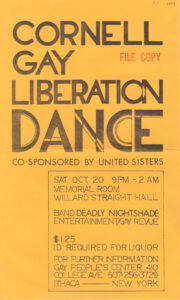
Investigator: Stephen Vider, History
Collaborator: Brenda Marston, Rare and Manuscript Collections
Arts & Sciences, 2021
We plan to digitize materials from the Cornell LGBT Coalition Records, dating from the late 1960s to the late 1990s. The Cornell LGBT Coalition was the second LGBT student group in the United States, originally founded in 1968 as the Student Homophile League, inspired by the founding of the Columbia Student Homophile League two years earlier. Over five decades, the Coalition in its various forms (first as the Student Homophile League, then as the Cornell Gay Liberation Front, then as GAYPAC, and later as the LGB then LGBT Coalition) played a critical role in reshaping LGBT identity, community, politics, and experiences on campus and in the Ithaca-area: organizing LGBT festivals, dances, and speaking events; staging protests against LGBT exclusion from local bars and businesses; identifying and pushing back against homophobia on campus; and more largely providing social support to LGBT students. Digitizing materials from the vast records of the Cornell LGBT Coalition, including flyers, photographs, correspondence, and other ephemera, will provide Cornell students and faculty, as well as a wider community of scholars, a critical lens on the development of LGBT college activism and U.S. LGBT activism more broadly. These materials will be a major source for a student-curated exhibition on LGBTQ student life and activism at Cornell, and will be integrated into other future classes at Cornell, including Vider’s lecture course “LGBTQ+ History in the U.S.”
Cornell University Blaschka Glass Invertebrate Models
Cornell University Blaschka Glass Invertebrate Models
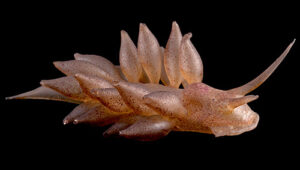
Investigator: Nelson Hairston and Drew Harvell, Ecology and Evolutionary Biology
Arts & Sciences, 2016
Cornell Collection of Blaschka Invertibrate Models
The goal of the project is to expand and improve the Blaschka Glass Invertebrate Collection website. The collection, which was originally acquired by Cornell as a teaching tool, is comprised of glass models of marine invertebrates. Although the main focus of the collection is biology, the medium and history of the Blaschka collection make it innately interdisciplinary – a subject of science, history, and art. The current website, which is used in several courses, was created over a decade ago. The funds will support updating both content and design to make the collection available to the largest undergraduate course on campus, Introductory Oceanography (EAS 1540, Professor Monger) as well as Marine Invertebrate Biodiversity (BIOEE 3730, Professor Harvell) and Marine Ecosystem Sustainability (BIOEE 4620, Professor Harvell and Greene).
Cornell University’s Morrill Act Lands and Their Revenues, 1865–2023
Cornell University’s Morrill Act Lands and Their Revenues, 1865–2023
Investigator: Jon Parmenter, History
Collaborator: Dusti Bridges, PhD candidate, Anthropology; Marina Zafiris, PhD candidate, Information Science
Grants Program for Digital Collections, 2022
This project concerns Cornell University’s relationship to former Indigenous lands received under the Morrill Act of 1862 and the role that revenues from those lands played in Cornell’s institutional growth to the present day. A selection of material held by the Division of Rare and Manuscript Collections will be digitized.
Cornell Yao Project
Cornell Yao Project
Investigator: Greg Green, Echols Collection, Kroch LibraryPreservation Fund, 2014
The material for this proposal comes from a Cornell project in Thailand in the 1970’s called the “Cornell Yao Project.” The project was run by Richard Cushman and Herbert Purnell, and focused on the Yao, now known as Mien, people in Thailand. The collection consists of over one hundred unique reel-to-reel audio recordings of the three primary Mien languages: ritual language, everyday language and song language. The recordings are of great historical, cultural, and linguistic value, and are absolutely unique.
Depicting the Sri Lankan Vernacular
Depicting the Sri Lankan Vernacular
Investigator: Bonnie MacDougall
Art, Architecture, and Planning, 2015
Depicting the Sri Lankan Vernacular Collection
This will be a digital archive that will include 50 unpublished drawings and 250+ photographs. These records are part of MacDougall’s larger retrospective project on vernacular traditions in a Sri Lankan forest community (“Rangama”) which has become an important locale for cross disciplinary study of vernacular architecture, tradition and change. The materials will be made available online for the use of at least two audiences: first, the more typical communities at the university level who are involved in teaching and research in architecture, planning, South Asian area studies and social/environmental change; second, for residents of the Sri Lankan community in question who have expressed a keen interest in our documentation of their own history as reflected in these and other materials.
Digital Tamang
Digital Tamang
Investigator: Kathryn March, Anthropology
Arts & Sciences, 2012
The goal is developing a Digital Tamang Study Center by creating an online archive for both original and secondary source materials, organized in such a way that it is accessible to members of the local Tamang village community. Initial contents will include field research material, based upon 37 years of research among the Tamang of central highland Nepal. The project will address important cultural heritage issues pertaining to privacy and rights of access by identifying public access materials and those which remain restricted to Tamang community.
Digitizing Tell en–Naṣbeh, Biblical Mizpah of Benjamin
Digitizing Tell en–Naṣbeh, Biblical Mizpah of Benjamin
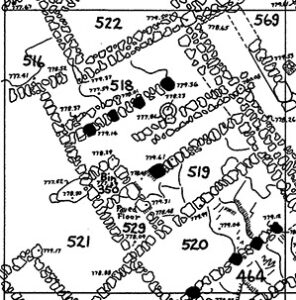
Investigator: Jeffrey Zorn, Near Eastern Studies
Arts & Sciences, 2016
Digitizing Tell en–Naṣbeh, Biblical Mizpah of Benjamin
Tell en-Naṣbeh, ancient Mizpah of Benjamin, is located 12 km north of Jerusalem in the West Bank. Approximately two thirds of this three hectare, primarily Iron Age, site was excavated by a team from Pacific School of Religion in Berkeley, CA, between 1926–1935 under the direction of W. F. Badé. Tell en-Naṣbeh is one of the most broadly excavated sites in the southern Levant, making it of great importance for those interested in studying house construction, settlement planning and social organization. The full set of 1:100 plans has, until now, only been available to those able to travel to Berkeley. The goal of this digitization project is to make these important plans available to students and scholars at Cornell and around the world.
Discovering the Hamlet of Enfield Falls: Archaeology of Tourism
Discovering the Hamlet of Enfield Falls: Archaeology of Tourism
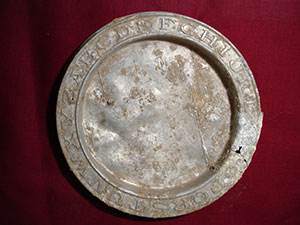
Investigator: Sherene Baugher, Anthropology
Arts & Sciences, 2019
Since 1998, Sherene Baugher and her students have been excavating and analyzing materials and sites now buried in Robert H. Treman State Park that were associated with the 19th century hamlet of Enfield Falls and its various buildings including a female-owned scenic resort hotel. The intentional destruction of the hamlet in the 1920s was not unique. In the first half of the twentieth century, various communities across the United States were destroyed as homes and properties were taken over to create state parks and national parks. This project is of interest to a wide audience because both 19th century rural communities and the archaeology of tourism have been understudied. The digitization of maps, yearly artifact catalogues, site reports, key 19th century newspaper articles, and key artifact photographs and the creation of an online platform will make this material available to students, historical archaeologists, preservationists, museums, historical societies, and others interested in rural communities in the 19th century, and in the archaeology of tourism. This project will also provide a means for the descendant community to access and explore their heritage.
Divine Comedy Image Archive, Fiske Dante Collection
Divine Comedy Image Archive, Fiske Dante Collection
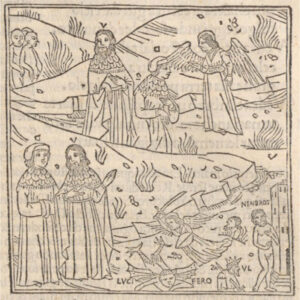
Investigator: Karen Pinkus, Italian and Comparative Literature
Collaborator: Marilyn Migiel, Italian Literature; William Kennedy, Comparative Literature; Patrick Stevens, Cornell University Library
Arts & Sciences, 2011
The Divine Comedy, the chief epic poem in Italian literature, may be described as compulsory study for any student specializing in Italian literature. Italian Studies programs will be the initial beneficiaries of the DCIA, but interdisciplinary approaches such as art history, visual studies and the history of the book will also find the DCIA a significant resource. The Divine Comedy Image Archive will offer scholars a large and diverse repository of images accessible for research and publication and will be accompanied with English/Italian descriptions and transcriptions.
Dynamic Breakthroughs in 20th Century Mathematics
Dynamic Breakthroughs in 20th Century Mathematics
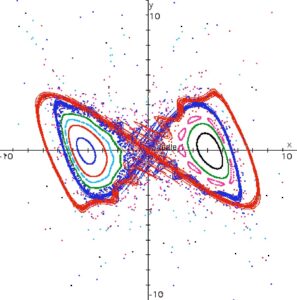
Investigator: John H. Hubbard, Mathematics
Collaborator: Beverly H. West, Mathematics
Arts & Sciences, 2018
The more we learn, the more we realize we do not understand (our take on a quote attributed to both Einstein and Aristotle). Computer graphics in the late 20th century brought a revolution to teaching and research in mathematics. Cornell was the forefront internationally in the study of dynamical systems, which includes differential equations and iterative equations, as well as complex dynamics, which expands on the popularized pictures from the Mandelbrot Set. But some of the most important outcomes are not well known. Lest this history be forgotten, our collection captures the history and brings important resources to educators and researchers alike.
Efraim Racker: Scientist and Artist
Efraim Racker: Scientist and Artist
Investigator: Ann Racker Costello, David Shalloway, Helen Weiss
Explore the life of scientist and artist Efraim Racker through this website launched in 2013, the centennial year of his birth. Sponsored by Cornell University Department of Molecular Biology and Genetics to honor Efraim Racker, its first Albert Einstein Professor of Biochemistry and Molecular Biology.
Experimental Television Center (ETC)
Experimental Television Center (ETC)
Investigator: Tim Murray, Society for the Humanities/Comparative Literature & English
Collaborator: Sherry Miller Hocking, Experimental Television Center (2012)
Arts & Sciences, 2011-2012
Rose Goldsen Archive of New Media Art / ETC
The funding will enable the digitization and preservation of the Experimental Television Center (ETC) video collection, which is a prominent video art collection. This project will provide an invaluable resource to students and faculty studying the history of the contemporary media arts and will be used in History of Art and Visual Studies, Comparative Literature, Art, Music, American Studies, Latino Studies, Asian American Studies, and Theatre, Film and Dance.
The second phase will also include associated ephemera and print material. Access at Cornell will provide an invaluable resource to students and faculty studying the history of the contemporary media arts. Wider use is anticipated once the collection is advertised, since the tapes have value for English, Africana, Latino Studies and Asian American Studies. Over time, video art is likely to become an important component of core coverage courses in twentieth-century art history.
Freshmen Desk Books
Freshmen Desk Books

Investigator: Evan Earle and Eileen Keating, Rare and Manuscript Collections
Preservation Fund, 2019
Freshmen Desk Books (HathiTrust)
The Freshman Desk book, also known as the Students’ Handbook, served as a quick reference of commonly needed information for an incoming student at Cornell. This included the academic calendar, information on campus, such as the library and athletic facilities, student organizations and student publications, and the administration. Also some information on campus traditions such as songs. Handbooks also contained information about the Ithaca area and advertisements for local businesses.
Fungi Collected in Shropshire and Other Neighborhoods
Fungi Collected in Shropshire and Other Neighborhoods
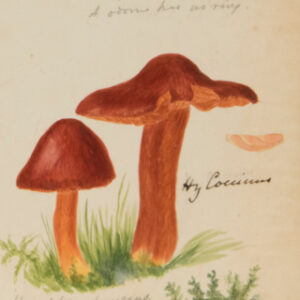
Investigator: Deborah Cooper, Mann Library
Preservation Fund, 2020
Fungi Collected in Shropshire and Other Neighborhoods (Biodiversity Heritage Library)
Fungi Collected in Shropshire and Other Neighborhoods (HathiTrust)
This is a breathtaking 3-volume inventory of mushrooms identified over a period of forty-two years (1860-1902) in various counties of England’s West Midlands region in the late 19th century. These three albums contain more than 100 sheets of original drawings and watercolors of fungi, representing hundreds of species. The artist, Miss M. F. Lewis of Ludlow, England, was a serious amateur naturalist whose work and collection of rare specimens is referenced in the records of the British Mycological Society among others. Lewis identifies the scientific name, place and date for each species, producing a work of painstaking attention to detail and taxonomy. Relatively little is known of Miss Lewis, but the quality of drawings shows her to have been an extremely skilled artist and mycologist. Her watercolors demonstrate a level of skill and training of a professional. This is the only known copy of this work, hand bound and previously unpublished, with field notes in Miss Lewis’ own hand. By digitizing these volumes we will be able to make this historically significant work accessible to researchers worldwide.
Hip Hop Collection
Hip Hop Collection
Investigator: Steve Pond, Music
Collaborator: Katherine Reagan, Cornell University Library; Bonna Boettcher, Cornell University Library
Arts & Sciences, 2011
Founded in 2007, Cornell’s hip hop collection is the largest archive on early hip hop culture in the United States. Faculty from the Departments/Programs of History, English, Africana Studies and Music have all incorporated elements of the archive into their research or teaching. This initial project will digitize flyers and preserve original recordings to set the stage for a future larger national grant with other partners aimed and enhancing access to and preserving the early history of hip hop culture.
Hip Hop Collection/Conzo Archive
Hip Hop Collection/Conzo Archive
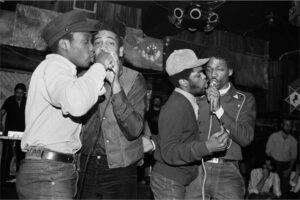
Investigator: Steve Pond, Music and Travis Gosa, Africana
Collaborator: Katherine Reagan, Cornell University Library
Arts & Sciences, 2012
Founded in 2007, Cornell’s hip hop collection is now the largest archive on early hip hop culture in the United States. A key foundational element of the collection is an assemblage of photographic prints by Bronx photographer Joe Conzo, Jr., taken between 1977 and 1984. Conzo is one of the few photographers known to have captured the early years of hip hop on film. Online access to the collection will be of interest to multiple disciplines, including art, art history, dance, music, American Studies, Africana. One of the project goals is to provide learning and teaching materials for a new Cornell course on hip hop.
Hip Hop Collection/Flyers
Hip Hop Collection/Flyers
Investigator: Steve Pond, Music
Collaborator: Katherine Reagan, Cornell University Library
Arts & Sciences, 2012
Hip Hop Party and Event Flyers
Hip hop party and event flyers contain the raw data of hip hop, from the days when hip hop was a performance based, localized culture from the streets of New York City. Digitization of additional flyers will build upon the online collection of Breakbeat Lenny, digitized in 2011 and we will seek to add crowdsourcing and mapping capabilities to enable students and others to better manipulate data and add to our knowledge. Online access to the founding artifacts of hip hop culture is a topic of keen interest to multiple constituencies around the globe, both academic and community based.
Historic Glacial Images of Alaska and Greenland
Historic Glacial Images of Alaska and Greenland
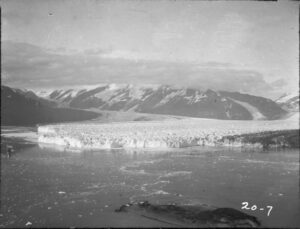
Investigator: Matt Pritchard, Earth and Atmospheric Sciences; Aaron Sachs, History; and Julie Elliott, Purdue University
Arts & Sciences, 2014
Historic Glacial Images of Alaska and Greenland
Images of Glaciers From C.U. Expeditions on Display (Cornell Daily Sun)
Enhancing our understanding of glacier behavior and how it relates to climate change requires long time series of observations to establish glacier evolution over many decades. In support of this goal, this project aims to create a digital library of historic images of glaciers in Alaska and Greenland from Cornell’s R. S. Tarr and O. D. von Engeln collections. Tarr, a former professor of geology and geography at Cornell, and von Engeln, a student and later professor of geology at Cornell, conducted several field expeditions to Alaska in the early 20th century and used pioneering photographic techniques to document their findings. During a recent campus visit, Alaskan historical glacier photography expert Bruce Molnia of the US Geological Survey stated that the R. S. Tarr collection is the photographic collection most likely to reveal important new observations of glacier change over the past 100 years in Alaska because it has been so little studied. Thus, the images are of scientific interest for understanding glacier dynamics, of public policy interest for documenting climate change, and of artistic interest as the images could be put on public display.
A number of researchers from institutions around the country have expressed great interest in using the images in their work, and the new collection will support teaching and learning activities in various fields not limited to environmental history, climate change, and visual culture. For example, Sachs often uses historical photographs in his lecture courses to help students become more fluent in reading and analyzing the visual culture in which they’re steeped, and also to help them get in touch with the texture of the past. One goal of this project is to determine the precise location of the glacier photographs and use them to construct a three dimensional model. Another scientific objective is to quantify the retreat and advance of the individual glaciers to better understand the relative effects of regional climate change and the complex response of the glaciers. This goal is well aligned with the existing research program of Elliott and Pritchard who use GPS and remote sensing observations to quantify glacier change in Alaska. As an outreach activity, there are plans for an exhibit in Fall 2014 using photos from the test scans to celebrate the centennial of the 1914 Alaskan Glacier Studies book by Tarr and Lawrence Martin.
Historical Cornell Veterinary College Video Recordings
Historical Cornell Veterinary College Video Recordings
Investigator: Erin Eldermire, Veterinary LibraryPreservation Fund, 2017
The College of Veterinary Medicine has produced many unique videos, primarily for instructional purposes, but many of the VHS tapes are at risk of degradation or cannot be played due to a lack of technology in the classroom. Digitizing the tapes will allow faculty to continue to use these valuable teaching tools, and will help preserve the college’s history of veterinary practice and education.
History and Theory of Digital Art in Video
History and Theory of Digital Art in Video
Investigator: Maria Fernandez, Art History
Arts & Sciences, 2013
History and Theory of Digital Art in Video Website
History and Theory of Digital Art in Video – Videos (Cornell only)
The aim of this project is twofold: 1) to digitize and archive a collection of fragile videotapes that are essential for teaching the history and theory of digital art, and 2) web-archive important yet ephemeral websites by artists that are integral to understanding contemporary internet art. The videotapes include works by pioneers in the field, and already showing serious color and signal deterioration. The video players that are used to play them are now obsolete. Similarly, the websites represent seminal work in the field, and yet are frequently lost due to the temporal nature of the internet. Because this is a relatively recent field in the history of art, there are no significant collections of the material for teaching purposes. The insecurity of access to these materials presents serious obstacles to teaching courses on the history of digital media art taught in many departments at Cornell. Consequently this collection would be of interest to scholars and students in many disciplines including art, architecture, comparative literature, technology of science studies, romance studies, Asian- American studies, government, and music.
Institute for Defense and Disarmament Studies Archive
Institute for Defense and Disarmament Studies Archive

Investigator: Matthew Evangelista, Government
Collaborator: Agnieszka Nimark, Judith Reppy Institute for Peace & Conflict Studies; Judith Reppy, Science & Technology Studies
Arts & Sciences, 2019
The core of the project consists of archival materials of the Institute for Defense and Disarmament Studies (IDDS), founded and run by Dr. Randall (Randy) Caroline Forsberg from 1980 until her untimely death in 2007; supplemented by materials in the personal collections of Matthew Evangelista, Judith Reppy, and other colleagues who have donated relevant items. The materials represent a sampling of a larger archive held at the Cornell University Library’s Division of Rare and Manuscript Collections.
International Workers Order (IWO) Collection Expansion
International Workers Order (IWO) Collection Expansion
Investigator: Jonathan Boyarin, Anthropology, Jewish Studies Program, Near Eastern Studies
Collaborator: Elissa Sampson, Jewish Studies Program; Curtis Lyons, Catherwood Library
Grants Program for Digital Collections, 2022
This expansion of the International Workers Order (IWO) and Jewish People’s Fraternal Order (JPFO) digital collection will focus on the multilingual, ethnic and national sections and how they dealt with each other in that context as well as more broadly within their political and pro-Soviet, and in the case of the JPFO, Yiddishist orbits. A subset of materials held by the Kheel Center and the Division of Rare and Manuscript Collections will be digitized.
International Workers’ Order (IWO) and Jewish People’s Fraternal Order (JPFO)
International Workers’ Order (IWO) and Jewish People’s Fraternal Order (JPFO)
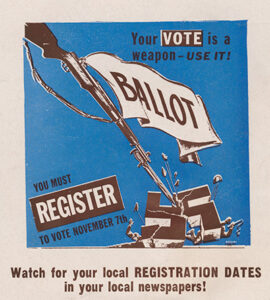
Investigator: Jonathan Boyarin, Anthropology, Near Eastern Studies, Jewish Studies; Elissa Sampson, Jewish Studies
Arts & Sciences, 2016
The goal of this project is to curate, conserve, and digitize an important section of the International Workers’ Order (IWO) archives and especially its Jewish division, known as the Jewish People’s Fraternal Order (JPFO), that are held at the Kheel Center in the Industrial and Labor Relations School. The IWO was founded in 1930 and disbanded in 1953. The JPFO was the largest of the many “national” sections of the IWO, and the archive here directly records the activities of the JPFO, in English as well as Yiddish. The digitized documents will support research and teaching in a wide range of disciplines as well as preserving this unique scholarly resource. Also, there are plans for creating an online exhibition, tentatively titled Fellow Travelers: From Popular Front to Black Book, which will serve as a teaching tool in secondary and university classrooms.
Ithaca House Archive
Ithaca House Archive
Investigator: Marty Cain, PhD Candidate, English
Arts & Sciences, 2020
This project will digitize select materials from the archives of Ithaca House, an Ithaca-based small press that operated from 1969 to 1986. Started by Baxter Hathaway, a Cornell professor, Ithaca House published a broad array of notable U.S. poets – C.S. Giscombe, Maxine Chernoff, Bob Perelman, and Ron Silliman among them – but was also rooted specifically in the Ithaca community, running two different storefronts that sold works by local artisans. While many of its staff were affiliated with Cornell, Ithaca House, importantly, was unaffiliated with the university. In fact, it responded to an institutional lack—Cornell University Press’s choice to turn away from publishing books of poetry. This project will digitize both a selection of work that the press published, as well as its business files. In doing so, this projects aims to situate Ithaca House within a particular historical moment in which small presses were developing new modes of distribution, and in which U.S. poetry had an increasingly complex, interwoven relationship with academic institutions.
James Gross Lecture and Oral History Interview Series on the National Labor Relations Board
James Gross Lecture and Oral History Interview Series on the National Labor Relations Board
Investigator: Cheryl Beredo, Catherwood Library, Kheel Center
Preservation Fund, 2013
We are working to digitize 273 audio cassette recordings made by ILR Professor James Gross of lectures by — and interviews with — those people most knowledgeable about the National Labor Relations Board (NLRB), many of whom are no longer living. In writing what is considered the authoritative history of the organization, Gross conducted interviews with NLRB staff and others who worked with the board, and organized conferences and lectures on the NLRB. These recordings document specific episodes in the history of the organization and capture what is missing in legal and government records.
Japanese Theater Manuscripts
Japanese Theater Manuscripts
Investigator: Janice Kanemitsu, Asian Studies
Collaborator: Daniel McKee, Cornell University Library
Arts & Sciences, 2010
Japanese Woodblocks: Theatrical Prints and Books from Early Modern Japan
Nineteenth century woodblock printed, heavily illustrated books on the Japanese theater.
Japanese Woodblocks from the William Elliot Griffis Collection
Japanese Woodblocks from the William Elliot Griffis Collection
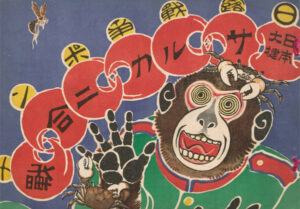
Investigator: Katsuya Hirano, History/Asian Studies
Collaborator: Daniel McKee, Cornell University Library
Arts & Sciences, 2011
Japanese Woodblocks: Knowledge of the World in the Early Modern Japan
These 17th century Japanese woodblock printed books represent Japan’s initial attempts to understand the west and modernize itself. They are therefore of great importance in understanding the formation of modern Japan. These books, many of which are rare or even unique in US collections, have great appeal to historians, art historians, and scholars of cultural politics.
John Clair Miller
John Clair Miller
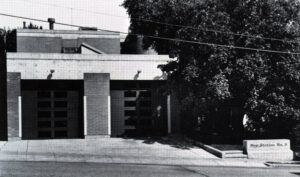
Art, Architecture, and Planning, 2014
John Clair Miller is an architect and professor emeritus of architectural design and theory at Cornell University, Ithaca, NY. This collection was built through the digitization of his architectural plans, drawings and photographs from 1962-1995.
John Reps Collection: Bastides
John Reps Collection: Bastides
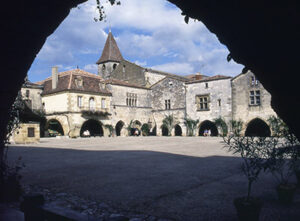
Investigator: John W. Reps, Department of City and Regional Planning
Art, Architecture, and Planning, 2014
John Reps Collection – Bastides
We are beginning development on an interactive portal to explore the architectural evolution of Bastides in the South of France. Professor Emeritus John W. Reps explored urban landscapes and developments worldwide. His spirit of discovery and the breadth of his travels made him not only a pioneering scholar in American urban planning history, but also a quintessential urban explorer.
Langtang Memory Project
Langtang Memory Project

Investigator: Austin Lord, PhD Candidate, Anthropology
Arts & Sciences, 2018
On April 25th 2015, the village of Langtang in Nepal was destroyed by a co-seismic avalanche that killed over 300 people. Over the course of the past three years, the Langtang community has attempted to rebuild their lives while honoring the memory of those who were lost. The Langtang Memory Project is a collaborative volunteer effort that seeks to create a ‘living archive’ of Langtangpa culture and heritage, while supporting intergenerational dialogue about place, identity, and memory within the Langtang community. This online collection of selected photographs, audiovisual materials, and other documentation will supplement the permanent collection which will be held in Nepal, and aims to create a valuable ethnographic and auto-ethnographic record that can help increase our collective understanding of the dynamics that shape disaster, vulnerability, and resilience.
Latin American Journals Project
Latin American Journals Project
Investigator: Tom McEnaney, Comparative Literature
Arts & Sciences, 2014
Latin American Journals Website
The Latin American Journals Project aims to create a digital collection of Latin American vanguard literary journals in support of multiple goals. Currently, related journals exist in partial form at a number of universities and research libraries including Cornell, Columbia, Harvard, Princeton, Yale and the NYPL. Consolidating a digital collection of publications that feature Latin American poetry, stories, essays, and visual art will transform existing scholarship in a number of ways. In addition to making these otherwise difficult to access print digitized journals digitally available in support of global scholarship, the project will support Professor McEnaney’s ongoing digital humanities collaboration with a group of colleagues from the University of Chicago. One of the project goals is to support the “mining” of textual information with applications such as topic modeling, natural language processing, information retrieval, stylometrics, and network analysis in order to reconsider questions of style, genre, and literary influence. The digitization of this archive would also benefit students interested in experimenting with such ‘distant reading’ tools and methodologies at Cornell. The grant will help to scale up Cornell’s database of Latin American journals in order to better understand the actual shape of the literary network, rather than accept presumed canons of importance. In the classroom, it will contribute to the curriculum in Professor McEnaney’s will use it for his “Cuba: Technology and Literature” course.
Leuenberger Israel/Palestine Map Collection
Leuenberger Israel/Palestine Map Collection
Investigator: Christine Leuenberger
Art, Architecture, and Planning, 2015
This project will seek to digitize and make available locally maps produced by various Israeli, Palestinian and international cartographic institutions that represent the territory of Israel and the Palestinian Territories in often varied ways. They also reveal the varied ways the Separation barrier is cartographically represented in line with map-producers assumptions about the function of the barrier, as either increasing Israeli security or as negatively impacting Palestinian land-claims and human rights. (Funded by the Arts & Sciences Teaching Digitization program.)
Lindsay Cooper Digital Archive
Lindsay Cooper Digital Archive
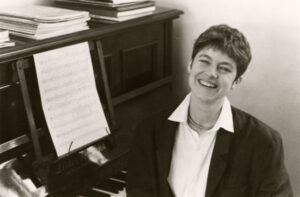
Investigator: Benjamin Piekut, Music
Arts & Sciences, 2015
Lindsay Cooper Digital Archive
The Lindsay Cooper Digital Archive includes the musical scores, sketches, and manuscripts of Lindsay Cooper’s work, spanning over 30 years of her career. Although much of her work has been issued (and reissued) on recordings, the scores and manuscripts have never been available to researchers. Currently in a storage locker in North London, the physical materials will have to stay in the UK, where she is well known; if they end up at the University of the Arts London (as they most likely will), it will be many, many years before they are available to scholars. Therefore, a partnership between Cornell and the University of the Arts London will make these scores and archival recordings available much earlier than they would be otherwise. In addition, pending permission from her estate, we would be able to make her manuscripts and print matter available to anybody on the web. Archival resources for this kind of avant-garde are rare, indeed, so this digital collection would be quite important, especially because there is a real paucity of women’s stories in the history of experimental and improvised music.
Living Bird
Living Bird
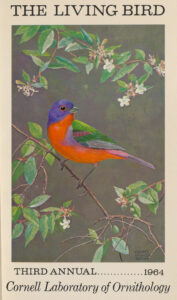
Investigator: Leo Sack, Adelson Library at the Lab of Ornithology
Preservation Fund, 2020
Living Bird (Biodiversity Heritage Library)
Living Bird has been the flagship publication of the Cornell Lab of Ornithology since 1962. For twenty years it was an annual scientific journal, before evolving into a popular quarterly magazine that aims to educate the public about bird conservation and science. Since 2008, new issues have been produced online as well as in print, but older issues 1962-2007 form a 121-issue, 9,000-page collection that is now being digitally preserved for the first time. It will be made freely available online through the Biodiversity Heritage Library and the Internet Archive.
Loewentheil Collection of African-American Photographs
Loewentheil Collection of African-American Photographs
Investigator: Cheryl Finley, Art History
Collaborator: Katherine Reagan, Cornell University Library
Arts & Sciences, 2012
This collection of African-American photographs stands to make a major impact on the study of African American visual culture in the nineteenth and twentieth centuries as they reveal volumes about black life and struggles in uncommonly rare photographs. Through digitization this resource will be widely available to scholars of African American Studies, Art History, American Studies and the History of Photography. These materials complement already existing Cornell collections, including the May Anti-Slavery, Hip Hop, Noyes and Rudin materials.
Maps of Southeast Asia
Maps of Southeast Asia
Investigator: Tamara Loos, History
Collaborator: Gregory Green, Cornell University Library; Boris Michev, Cornell University Library
Arts & Sciences, 2012
The goal of the project is provide online access to the early maps of Southeast Asia, which are very unique and quite well known. Currently they are available only for onsite use. The maps are of great value to courses covering the history of Southeast Asia, both at Cornell and elsewhere, providing online access will be a service to the academic community researching the region.
Modern Farmer
Modern Farmer
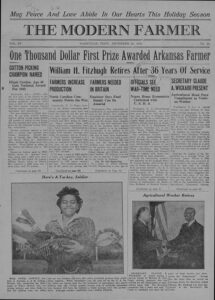
Investigator: Michael Cook, Mann Library
Preservation Fund, 2018
Modern Farmer (Internet Archive)
Modern Farmer was one of the only serial publications published in the Depression-era United States that was aimed at African-American farmers. It was published between 1929-1949 by the National Federation of Colored Farmers (NFCF), an organization which formed local chapters of buying and selling distribution cooperatives for African-American farmers and their goods at a time when prevailing Jim Crow laws made such efforts dangerous. Editor James P. Davis was the president of the NFCF, Head Field Officer the Agricultural Adjustment Administration and was also a member of President Roosevelt’s “Black Cabinet.” Mann Library’s copies of Modern Farmer are the only known copies of this important document of 20thcentury history.
Momentum Ancyranum Squeezes
Monumentum Ancyranum Squeezes
Investigator: Eric Rebillard and Ben Anderson, Classics/Art History
Arts & Sciences, 2013
The goal of the project is to preserve and make broadly accessible a collection of important and fragile squeezes (paper impressions) that were created in Ankara (Turkey) during the Cornell Expedition to the Assyro-Babylonian Orient in 1907. This will be a valuable online resource in the study of Roman history and epigraphy, made available to a large audience through digitization (and preventing deterioration of the original items that comes from unnecessary handling of the objects). It will furthermore represent an extension of past projects funded by the Arts and Sciences Grants, in particular the documentation of the Cornell Cast Collection and the Cornell Coin Collection.
Müller/Kluge
Müller/Kluge
Investigator: David Bathrick, German Studies/TheaterArts & Sciences, 2010
Additional video content integrated into Alexander Kluge website.
Music DATs
Music DATs
Investigator: Lenora Schneller, Music Library
Preservation Fund, 2017
The Cornell Music Library houses the master recordings of the Music Department’s performances from 1985 to 2004, a large number of which are stored on obsolescent digital audio tapes (DAT). The preservation of these unique performances by Cornell faculty and students, along with internationally renowned guest musicians, is paramount as they are fragile and susceptible to degradation.
Nepali Texts
Nepali Texts
Investigator: Kath March, Anthropology
Collaborator: Bronwen Bledsoe, Cornell University Library
Arts & Sciences, 2010
Nepali textbooks to be of interest to scholars in the politics, language/linguistics, sociology, religious studies, agricultural and international economic development studies, and of course, education. They are visually interesting, part of everyday and popular culture, and ripe for application to timely academic problems in virtually any field.
Neto Hatinakwe Onkwehowe Collection
Neto Hatinakwe Onkwehowe Collection
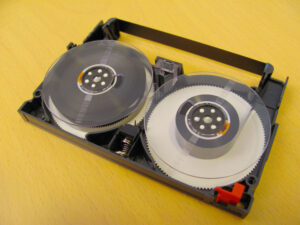
Investigator: Mary Pat Brady, English
Collaborator: Breanna Leslie-Skye, PhD Candidate, English
Arts & Sciences, 2020
This project will digitize pieces of Haudenosaunee video, audio, and text archives of the Niagara Region of New York and Southern Ontario, which come from the Neto Hatinakwe Onkwehowe non-profit arts organization. Centering this collection is a set of Hi-8 tapes which contain recordings of public Haudenosaunee cultural events of the Niagara Region (est. 1990s-2000s), including powwows in the now-defunct ‘Turtle Building’ in Niagara Falls, New York as well as elder storytelling. This project aims to protect, restore, and make accessible valuable pieces of Haudenosaunee collective memory to the communities that created them.
Nuclear Fallout Pamphlets Collection
Nuclear Fallout Pamphlets Collection
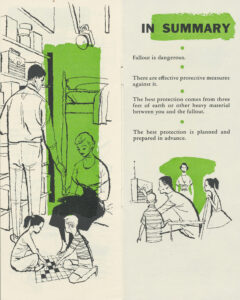
Investigator: Ji Hyun Lee, PhD Candidate, English
Arts & Sciences, 2018
Nuclear Fallout Pamplets Digital Collection
On August 6, 1945, the world changed forever: nuclear war became a possibility. The Nuclear Fallout Shelter and Safety Collection, 1959-1961, #8584, held by the Division of Rare and Manuscript Collections, contains pamphlets, booklets, and newsletters issued by the United States federal and state governments that instruct citizens on how to prepare for and survive a nuclear attack. Encapsulating the heyday of American civil defense, this collection is relevant not only as a piece of Americana but also as an investigative tool into the values and mores of the United States during the early Cold War. It gives insight into the debate about governmental versus individual responsibility during a time of war; with documents titled “Personal Preparedness in the Nuclear Age” and “The Family Fallout Shelter,” an image emerges of a country that puts enormous emphasis on individualism and family values. These digitized Cold War materials will not only support the study of history but also benefit research and teaching in multiple disciplines, such as lending context to the explosion of apocalyptic fiction in the 20th and 21st centuries as well as adding dimensionality to the current appeal of survivalism and prepper culture.
NYS Historical Dendrochronology Project
NYS Historical Dendrochronology Project
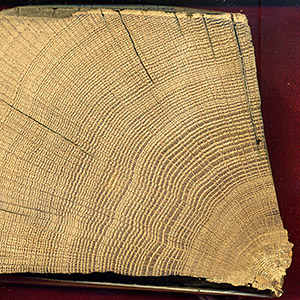
Investigator: Carol Griggs, Classics, Tree-Ring Laboratory
Collaborator: Sturt Manning, Classics, Archaeology, Tree-Ring Laboratory; Brita Lorentzen, Tree-Ring Laboratory; Cynthia Kocik, Tree-Ring Laboratory
Arts & Sciences, 2017
Cornell Tree-Ring Laboratory material on eCommons
The New York State Historical Dendrochronology Project collects and uses dendrochronology to date wood samples from structures across upstate New York to provide precise dates of their construction, modification, and building history. The collection is comprised of approximately 67 sites and 680 samples, whose tree-ring chronologies have date ranges from 1448 to the early 1900s, plus nearly 250 samples from 13 modern forest sites that currently date from the early 1720 to 2016, to calendar-date our historic chronologies. Along with the tree-ring dates, pertinent historical information about a structure and the surrounding region, plus further details about the samples, can be used for historical, ecological, and climatological research on local, regional, and larger spatial scales and on annual to multi-century time scales. The digitization of the physical samples and all associated materials will provide easy access to this collection and will be of value to those in dendrochronology, history, archaeology, environmental and earth sciences, as well as museums, historical societies, and individuals interested in the history of the region.
Obama Visual Iconography
Obama Visual Iconography
Investigator: Travis Gosa, Africana Studies and Research Center
Collaborator: Katherine Reagan, Cornell University Library
Arts & Sciences, 2012
Barack Obama Visual Iconography
In 2008 Cornell Library’s Division of Rare and Manuscript Collections (RMC) began building a collection of political campaign publicity and memorabilia documenting the campaign and election of President Barack Obama. Online access to these materials will provide a unique visual iconography of the election of America’s first black President. It will constitute an important teaching and research resource for understanding modern campaign strategies and political mobilization. The resulting digital collection will be of interest to multiple disciplines, including art, art history, history, American studies, Africana studies, media studies, visual studies, political science, and government.
Okyeame Literary Magazine
Okyeame Literary Magazine
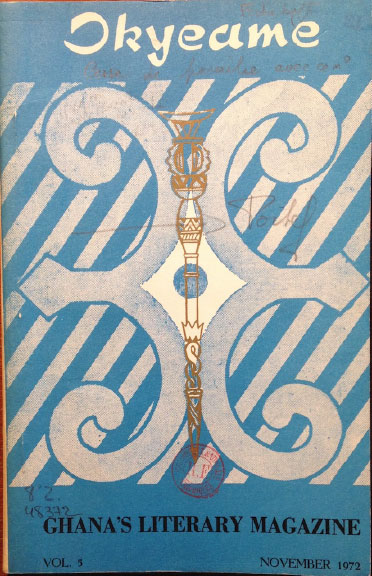
Investigator: Ama Bemma Adwetewa-Badu, PhD Candidate, English
Arts & Sciences, 2021
Okyeame was a literary magazine founded by the Ghana Society of Writers in the post-Independence era. The first issue of Okyeame appeared in 1960, and issues were published, at irregular intervals, up until 1972. Okyeame took its name from a traditional Ghanaian figure, the “linguist” or “spokesperson” responsible for acting as a communicative intermediary between a chief and his people. Inspired by Kwame Nkrumah, the first Prime Minister of Ghana, the magazine sought to create a venue for exploring the African experience from a new creative and intellectual framework. Featuring works in translation and English, the magazine showcased “ [a]rticles calling for a Ghanaian poetry whose content and form was based on oral tradition, drum poetry” alongside “ traditional oral works translated by leading contemporary poets” of the period.[1] Likewise, the magazine dispersed Adinkra symbols on the covers and throughout the pages. For example, the image that accompanies this description appears to be a simplified variation of (dwennimmen), which literary translates as “ram’s horns” and symbolizes strength and humility. Nestled between the dwennimmen is an okyeamepoma (Linguist’s Staff), highlighting, once again, the magazine’s desired place as an intermediary for the people of 1960s-1970s Ghana and abroad Writers published in the magazine include acclaimed writers such Ama Ata Aidoo, Efua Sutherland, Ayi Kwei Armah, and the first editor, Kofi Awoonor.
These digitized archival materials will be accompanied by a digital exhibition, salon, and research and teaching aids on the Global Poetics Project website. This archive will be of particular interest to scholars researching post-colonial literature, little magazines, post-colonial publishing, print cultures of the Global South, African literature, theories on Black poetry and literary practices, texts of the Black diaspora, and the study of Black diasporic literature at the start of the decolonial moment.

Onöndowa’ga:’ (Seneca) Haudenosaunee Archaeological Materials, circa 1688–1754
Onöndowa’ga:’ (Seneca) Haudenosaunee Archaeological Materials, circa 1688–1754
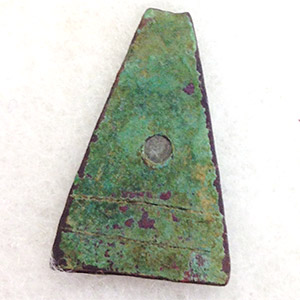
Investigator: Kurt Jordan, Anthropology
Collaborator: Dusti Bridges, MA candidate, Archaeology
Arts & Sciences, 2017
View the Onöndowa’ga:’ collection
The goal of this project is to digitize and introduce archaeologically-recovered materials from two late 17th and early 18th century Seneca (Onöndowa’ga:’) Haudenosaunee (Six Nations Iroquois) sites located near Geneva, New York into an online platform that will be meaningful for descendant communities as well as researchers in Anthropology, History, and American Indian and Indigenous Studies. It will provide information on archaeological materials from a poorly-understood era to researchers, serve as a resource for education on the indigenous history of New York, and most importantly provide a means for descendant communities to access and explore their heritage.
Persuasive Cartography: The PJ Mode Collection
Persuasive Cartography: The PJ Mode Collection
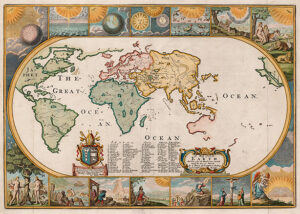
Collaborator: PJ Mode, Katherine Reagan
This project digitizes and makes available a collection of “persuasive cartography,” maps primarily intended to send a message, to influence the opinion of the viewer, rather than to communicate “objective” geographic information (Tyner 1974). Maps of this sort have also been described as “suggestive cartography,” “rhetorical cartography” and “propaganda maps” (a less apt term, because the word “propaganda” has become a pejorative).
Oral Histories of American Labor–Management Relations
Oral Histories of American Labor–Management Relations
Investigator: Cheryl Beredo, Kheel Center for Labor-Management Documentation and ArchivesPreservation Fund, 2017
Dating from 1969 through 1990, the 80 oral histories proposed for digitization are among the Kheel Center’s most significant audio recordings on magnetic media. These are unique recordings not held by any other archival repository, and document the experiences of a federal labor arbitrator, labor leaders, union organizers, and union members. These fragile, unstable items have been restricted for 15 years in order to protect them from further damage, so digitization will once again allow for research and teaching access to these important historical documents.
Photographs & Travel Journals from the Hedda Morrison Collection
Photographs & Travel Journals from the Hedda Morrison Collection
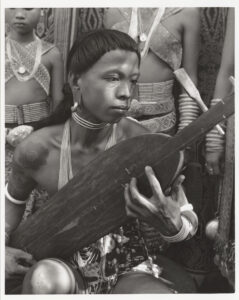
Investigator: Kaja McGowan, History of Art
Collaborator: Shorna Allred, Natural Resources
Arts & Sciences, 2018
This collaborative project examines the cultural resilience of the Penan people in the state of Sarawak in northwestern Malaysia. Hedda Morrison spent 20 years living and working in Sarawak, starting in the late 1940s and she frequently returned to the region throughout the 1970s and 1980s. She began photographing the Penan at a time when they were still predominantly nomadic, but a shift to a more settled life is evident in later photographs. A selection of photographs from the Hedda Morrison photographs, [ca. 1950-1985] collection held by the Division of Rare and Manuscript Collections were used to conduct ethnographic interviews with the Penan in 2018, aiding in the collection of stories, memories, and ecological and cultural knowledge from Penan elders.This online collection will feature those photographs and Morrison’s travel journals and will allow for further research by students and scholars. It will also allow the Penan themselves to access the materials.
Photographs of the International Plant Scientists, 1926
Photographs of the International Plant Scientists, 1926
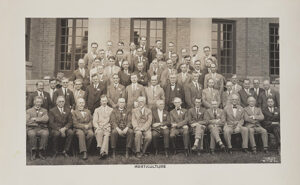
Investigator: Sarah Kennedy, Mann Library
Preservation Fund, 2019
Photographs of the International Plant Scientists, 1926 (HathiTrust)
Piranesi
Piranesi
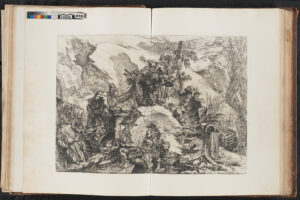
Investigator: Katherine Reagan, Rare and Manuscript Collections
Preservation Fund, 2020
The 18 volumes under review for treatment and documentation comprise Rare and Manuscript Collections’ Piranesi holdings and form part of a set of books presented by Pope Clement XIV to Henry Frederick, Duke of Cumberland, during his residence in Rome. The Piranesi conservation project will span the next year and a half; the very large volumes will require specialized conservation treatment and imaging.
Pomology
Pomology
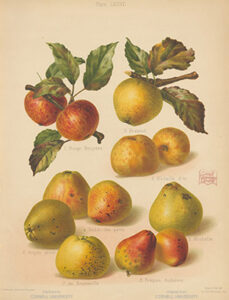
Investigator: Sarah Kennedy, Mann Library
Preservation Fund, 2018
Pomology collection (Biodiversity Heritage Library)
This project aims to digitize a number of important rare and non-circulating items related to cider production, pomology, and orchard management housed within Mann Library. There has been increased interest in these materials by researchers and hobbyists, as well as those in the rapidly growing cider industry. Cornell has long been a leader in the field of pomology, and access to these materials will facilitate further teaching, research, and outreach.
Postcards of female and male impersonators and cross–dressing in Europe and the United States, 1900–1930
Postcards of female and male impersonators and cross–dressing in Europe and the United States, 1900–1930
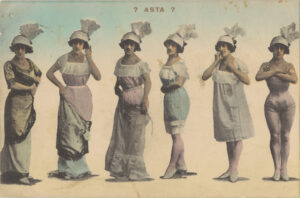
Investigator: Durba Ghosh, History and Feminist, Gender, & Sexuality Studies
Collaborator: Leslie Adelson, German; Mitchell Greenberg, Romance Studies; Tamara Loos, History; Brenda Marston, Cornell University Library; Kristin Roebuck, History
Arts & Sciences, 2018
Impersonator and Cross-dressing Postcards Collection
At the turn of the twentieth century, postcards of men dressed as women and of women dressed as men circulated across Europe and the United States, as performers, musicians, dancers, and actors challenged (and reinforced) gender norms and binaries. This collection draws together postcards held by the Divison of Rare and Manuscript Collections that represent different ways of performing gender. The images, as the one on the right, show bodies in various states of dress, undress, and redress, troubling the ways that clothing expressed a range of identities. The form of the postcard was public in that many were sent through the mail; the images, however, were taken in photography studios in intimate encounters between anonymous photographers and their subjects. The images play with depictions of race, colonialism, desire, and questions related to LGBT history. The collection supports research and teaching for gender and sexuality studies, performance studies, language and literature.
Punk Music Flyers
Punk Music Flyers
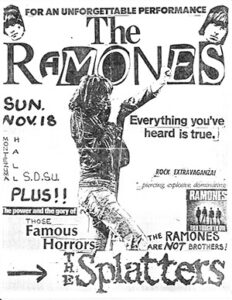
Investigator: Judith Peraino, Music; Tom McEnaney, Comparative Literature
Arts & Sciences, 2016
Punk Flyers Digital Collection
The project will involve the digitization of a collection of 1,800 punk music flyers owned by Cornell University Library’s Division of Rare and Manuscript Collections. The resulting digital collection will make a significant body of unique, ephemeral materials broadly available to scholars interested in the development of punk and post-punk music, culture, aesthetics, fashion, and politics from the late 1970s through the early 2000s. Cornell offers multiple courses that include punk music and culture. Punk studies have been on the rise in the academy for several decades, including the establishment of punk’s first peer-reviewed scholarly journal in 2011. This growth has prompted several academic libraries to begin building collections of unique documentation on punk (UCLA, NYU, Yale, Washington DC Public Library). None of these institutions have yet digitized any substantive portion of punk flyers, however. Cornell’s punk flyer collection would be the first digital collection of its kind.
Ragamala Paintings
Ragamala Paintings
Investigator: Iftikhar Dadi, History of Art and Visual Studies and Bronwen Bledsoe, Cornell University Library
Arts & Sciences, 2013
The project involves photographing and digitizing a slide collection of Indian Raga Mala paintings, which were recently gifted to Cornell and are perhaps the world’s greatest collection of images in this genre. The collection will be used in teaching South Asian art history classes at Cornell and elsewhere, supporting global scholarship activities. The paintings will also be useful for research into Indic regional histories, courts, and cultures. For instance, scholar at Columbia University who are working on premodern Indian courtly culture are particularly eager to have the Ragamala collection at their fingertips.
Selections from the CUMV Ornithological Collection
Selections from the CUMV Ornithological Collection
Investigator: Vanya Rohwer, Cornell Museum of Vertebrates
Collaborator: Irby Lovette, Ecology & Evolutionary Biology
Grants Program for Digital Collections, 2022
From hummingbirds to albatrosses, the Cornell University Museum of Vertebrates (CUMV) houses over 60,000 specimens of birds from around the world. However, this resource remains difficult to access, as people must visit the collection in person to see the museum’s holdings. This project will digitize a subset of the ornithological collection — nests, eggs, extended wings, skeletons, and study-skin specimens — at the CUMV. The specimens chosen for digitization will highlight the diversity of avian specimen types housed at the CUMV and illustrate how different specimens facilitate research, inspire new ideas, and aid community needs.
Selections from the Firebrand Books Records Collection
Selections from the Firebrand Books Records Collection
Investigator: Alec Pollak, PhD candidate, EnglishGrants Program for Digital Collections, 2022
Firebrand Books, based in Ithaca, was a flagship press of the feminist and Women in Print movements. This project will digitize a selection of documents from the Firebrand Books records, 1984-2001, held by the Division of Rare and Manuscript Collections.
Selections from the Gerow D. Brill Papers
Selections from the Gerow D. Brill Papers
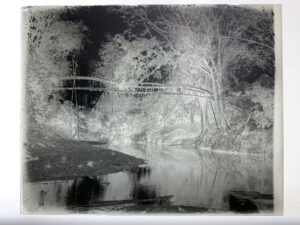
Investigator: Claire Cororaton, PhD Candidate, History
Collaborator: Emily Zinger, Cornell University Library
Arts & Sciences, 2021
This project will digitize glass negatives from the Gerow D. Brill Papers. Brill served as a scientific explorer for the United States Department of Agriculture. Soon after the outbreak of the Philippine-American War (1899 – 1907), he was appointed to set-up a model agricultural experimental station and agricultural school. The curated selection of glass negatives will focus on his survey of the agricultural situation of Philippines, such as photos of sugar farms and sugar mills, rice plantations, and duck farms. Brill’s photos present an unexplored visual lens into the early 20th century context of the Philippines, as well as the beginnings of US imperialism in Southeast Asia. They also foreground questions of agricultural productivity to the origins of the development of the modern Philippine State. These photos would also be of interest to an interdisciplinary group of scholars from fields such as Philippine Studies, Southeast Asian Studies, US Empire, political ecology, science and technology studies, and visual studies of colonialism. Finally, it would serve as an effective teaching tool for professors and scholars wishing to utilize visual sources in courses on empire and vision from a transnational perspective.
Sterrett Photographs Collection
Sterrett Photographs Collection
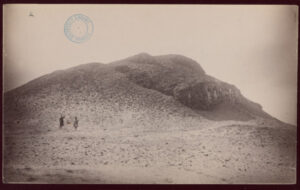
Investigator: Benjamin Anderson, History of Art and Visual Studies
Arts & Sciences, 2015
Sterrett Photographs Collection
The goal is creating a digital repository for the Sterrett Photographs collection, which documents major archaeological monuments in present-day Greece, Turkey, Cyprus, Syria, and Iraq. The collection constitutes a major documentary resource for the study of archaeological sites that have been substantially altered by subsequent restorations and developments, or that have been very recently destroyed or face a real threat of destruction. Given the ongoing demolition of archaeological heritage in the regions covered by the Sterrett Photographs, we anticipate scholarly attention for this collection to increase in coming years. This is an important collection for training archaeology and architectural history student in learning how to work with historical photographs as a primary form of evidence.
Street Art Images from the IGTimes
Street Art Images from the IGTimes
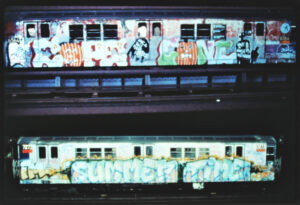
Investigator: Andrew Moisey, History of Art and Visual Studies
Collaborator: Katherine Reagan, Rare and Manuscript Collections; Kate Addleman-Frankel, Herbert F. Johnson Museum of Art
Arts & Sciences, 2020
This project will provide digital preservation and access for more than 900 slides documenting aerosol and street art from the 1970s, 80s, and 90s. The images are drawn from the editorial files of the International Graffiti Times (IGTimes) the first underground zine devoted to aerosol and street art (1983-1994), part of Cornell Library’s Hip Hop Collection. The IGTimes was founded and edited by David Schmidlapp, who worked with legendary artist and Hip Hop cultural pioneer Phase2 (1955-2019) as art director of the magazine. Phase and Schmidlapp used this collection of slides to educate audiences about street art and its culture. They called their presentation the “Aerosol Art Armada” and took the show on the road to schools, community centers, and other cultural venues in the 1980s and early 90s as a freestyle lecture/performance, combining visual documentation of the development of aerosol street art with live dialogue between Phase2 and Vulcan. Once digitized, the Aerosol Art Armada slides will offer a view of how street art practitioners embedded in graffiti culture itself were codifying and presenting their work in the 1980s and 90s.
Tom Harrison Borneo Collection
Tom Harrison Borneo Collection
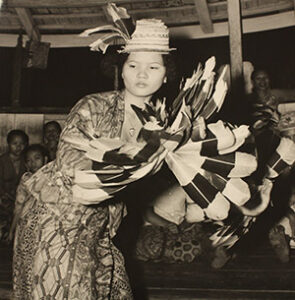
Investigator: Gregory Green, Kroch Asia Collection
Preservation Fund, 2019
Tom Harrisson was a unique and remarkable scholar of Southeast Asia. For approximately 40 years his important contributions to the field ranged from natural history and ornithology to anthropology and archaeology. For many years he was the curator of the Sarawak Museum, and he is credited with discovering the earliest dated human remains on the island of Borneo. Cornell has in our possession a number of papers from Tom Harrisson that are largely focused on the local indigenous peoples of the Malaysian territory of the island of Borneo. The digitization of these materials will be a great resource for scholars of the region and will finally allow the people of the area concerned to access this significant piece of their own history.
Waguih Ghali Diaries
Waguih Ghali Diaries
Investigator: Deborah Starr, Near Eastern Studies
Collaborator: Ali Houissa, Cornell University Library
Arts & Sciences, 2012
Waguih Ghali Unpublished Papers
The goal is to digitize the only known complete copies of diaries and manuscripts of Waguih Ghali, an Egyptian Coptic Anglophone writer who spent his adult life as a political exile. There is a dearth of information about Ghali’s life and the diary entries will provide insights to his time in exile. Recently fragments of the diaries have been translated and published in the Egyptian press. Scholars around the world will have access to the complete set of diaries and unpublished manuscripts. The online archive will provide an invaluable source in support of teaching and research, especially within the context of Arab Diaspora.
Warburg’s “Atlas” Panels
Warburg’s “Atlas” Panels
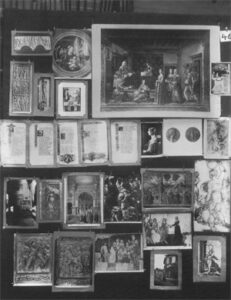
Investigator: Peter Uwe Hohendahl, German Studies, Comparative Literature
Collaborator: Kizer Walker, Cornell University Library; Peter J. Potter, Cornell University Press; Christopher D. Johnson, Comparative Literature, Harvard University
Arts & Sciences, 2012
Mnemosyne: Meanderings through Aby Warburg’s Atlas
The goal of the project is to build an interactive resource for the exploration of the fragmentary “atlas of images” left by German Jewish art historian Aby M. Warburg (1866-1929). The Atlas involves the assemblage of hundreds of images juxtaposed on wood panels. An interactive, web-based treatment of the Atlas will realize Warburg’s ideal, namely, that each viewer makes his or her own connections between the myriad images presented in the Atlas. This website will serve as a multimedia companion to Signale: Modern German Letters, Cultures, and Thought and will support exploration of new technologies and new partnerships in creating economically viable channels for disseminating scholarship.